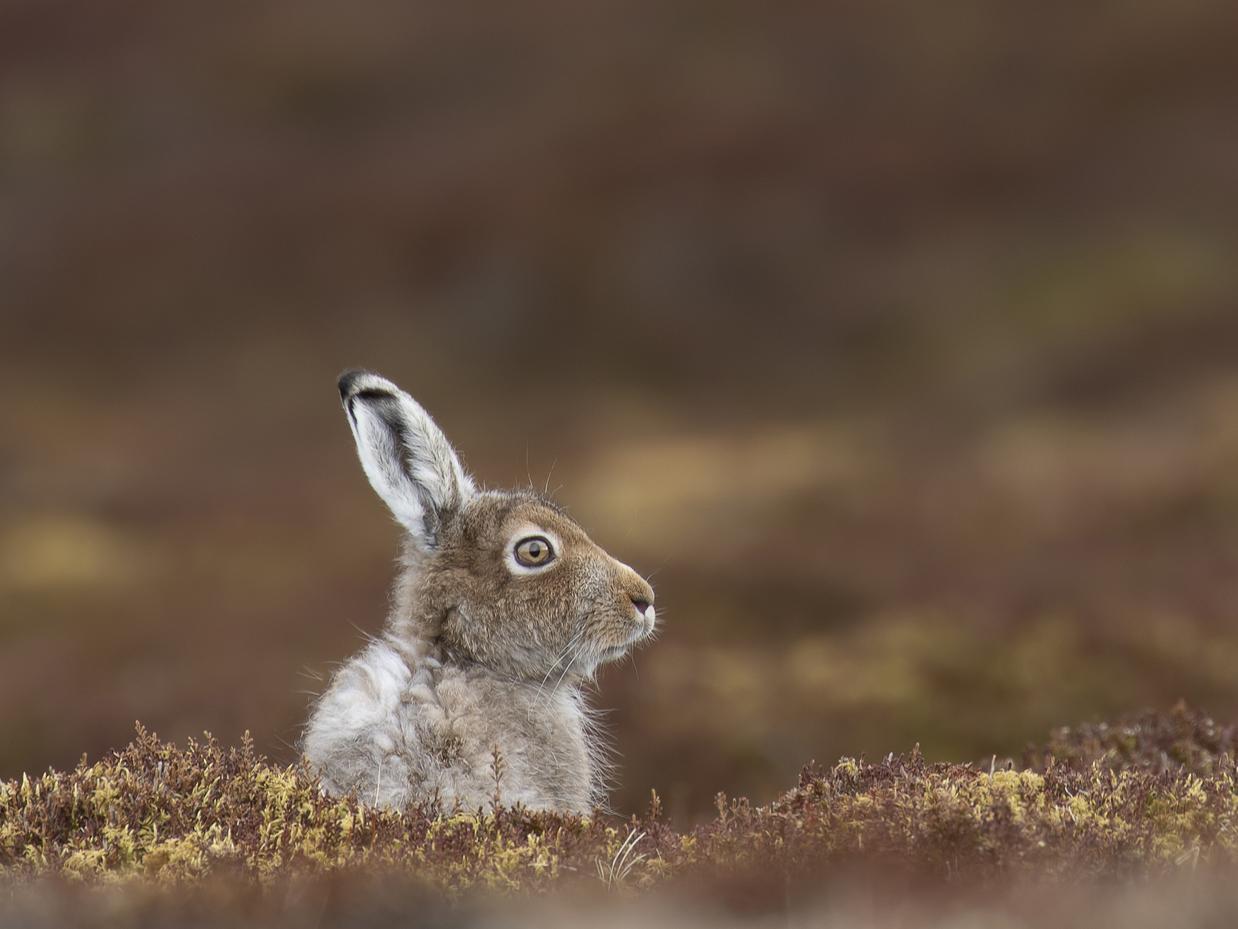Mountain hare population in Scotland at 1% of 1950s level
'Severe' decline blamed on habitat changes and culling by managers of local grouse shooting moorland

Your support helps us to tell the story
From reproductive rights to climate change to Big Tech, The Independent is on the ground when the story is developing. Whether it's investigating the financials of Elon Musk's pro-Trump PAC or producing our latest documentary, 'The A Word', which shines a light on the American women fighting for reproductive rights, we know how important it is to parse out the facts from the messaging.
At such a critical moment in US history, we need reporters on the ground. Your donation allows us to keep sending journalists to speak to both sides of the story.
The Independent is trusted by Americans across the entire political spectrum. And unlike many other quality news outlets, we choose not to lock Americans out of our reporting and analysis with paywalls. We believe quality journalism should be available to everyone, paid for by those who can afford it.
Your support makes all the difference.The mountain hare population of the moorlands in the eastern Scottish Highlands has plummeted by 99 per cent since the 1950s.
Culling by gamekeepers is thought to be among the causes of the “severe” decline of these native mammals, which was recorded in a long-term study by the Centre for Ecology & Hydrology and the RSPB.
The research focused on moorland managed for red grouse shooting, as well as nearby mountains.
From 1954 to 1999, hares on moorland sites decreased by almost 5 per cent every year, and the decline accelerated to 30 per cent per year between 1999 and 2017.
Alpine sites also saw a decline over the past 10 years following years of population growth, but their numbers did not reach the lows observed at lower altitudes.
Land use changes, such as the loss of grouse moors to conifer forests, were partly to blame for the moorland trend, the study concluded, as was intervention by local moorland managers.
Specifically, the increased decline in the past two decades coincided with a boost in hare culling by gamekeepers, with the intention of controlling the spread of ticks and protecting these fragile environments.
The findings, published in the Journal of Applied Ecology, were revealed after the annual grouse shooting season began on Monday.
Dr Adam Watson of the Centre for Ecology & Hydrology, who led the study, said he was “delighted and relieved” to see the results published.
“Having counted mountain hares across the moors and high tops of the eastern highlands since 1943, I find the decline in numbers of these beautiful animals both compelling and of great concern,” he said.
Campaigners believe that despite the supposed positive effects of hare culling, the practice is both “indiscriminate and ruthless”. The RSPB said urgent action is needed to protect mountain hares.
Duncan Orr Ewing, head of species and land management at the charity in Scotland, said: “We consider that large-scale population reduction culls are both illegal under EU law and unwarranted as a method for controlling grouse disease.
“Management of this species should now be more tightly controlled by Scottish Natural Heritage to safeguard mountain hare populations.”
However, other groups said the new study was “out of kilter” with other studies on mountain hares.
A spokesman from the Scottish Moorland Group said: “This latest research also flies in the face of what estate owners and land managers see every day on the ground – that hare populations are very high.
“We are perplexed that the author of this report did not seek to get data from moorland managers.
“It should be remembered that mountain hares are culled only when the populations are sufficiently high and culls only control a very small percentage of the population.”
The Scottish Gamekeepers Association said hare numbers remain among the highest in Europe on Scottish grouse moors.
A spokesman said: “This work is largely at odds with what is being seen on the ground in grouse moor areas, where hare numbers – in good breeding seasons – remain very, very high, sometimes reaching densities of up to 200 hares per square km.
“It will be helpful to scrutinise the study’s methods and consistency given such a discrepancy with the current reality.”
A Scottish government spokesman said: “Ministers are legally obliged to safeguard the conservation status of mountain hares and take that responsibility seriously.
“We will consider this evidence alongside existing data sources in considering whether further action is required to protect mountain hares.
“The independently-led Grouse Moor Management Group, set up to examine how to ensure grouse moor management is both sustainable and legally compliant, is also looking at mountain hare management as part of its remit.
“It is important to acknowledge that it may be necessary to control mountain hare numbers in some specific circumstances, however large-scale culling cannot be justified.”
Grouse shooting is a historic sport dating back to the mid-1800s that is nonetheless mired in controversy.
Landowners on grouse moors have been accused of killing natural predators of the grouse, such as endangered hen harriers.
The practice of burning heather to regenerate moorland habitat has also been the subject of intense debate, with environmentalists saying it puts local wildlife at risk.
Additional reporting by PA
Join our commenting forum
Join thought-provoking conversations, follow other Independent readers and see their replies
Comments